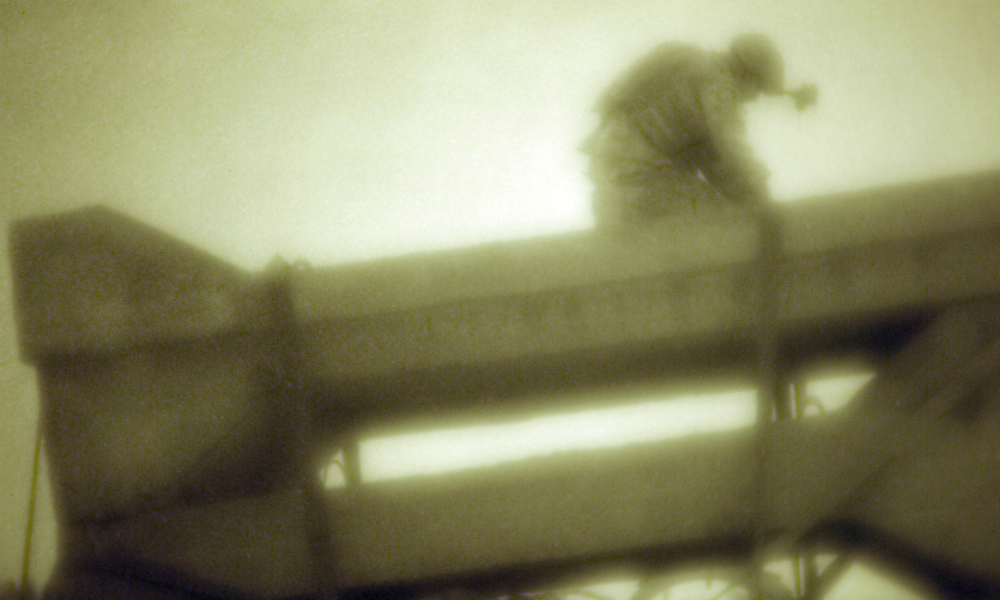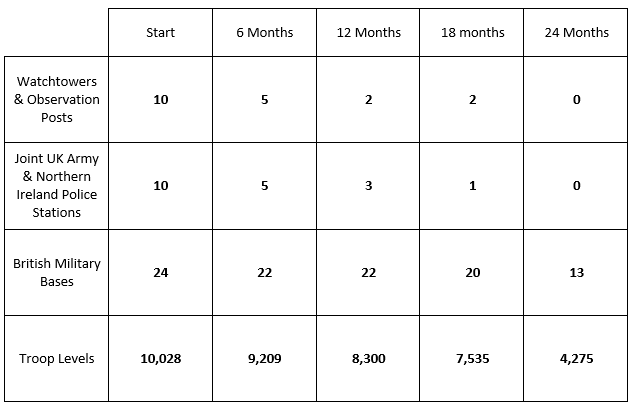In 2013, David Kilcullen, an advisor to Gen. David Petraeus during the Iraq War, was asked how the US military reduced violence in Baghdad by 95 percent. “We did it by killing the city,” he responded. “We shut the city down. We brought in more than 100 kilometers of concrete T-wall. We put troops on every street corner.” The US military’s counterinsurgency campaign—and the concrete barriers that were an integral part of it—certainly brought impressive, measurable short-term improvements to the security situation in Baghdad. However, by 2014, just after Kilcullen’s explanation, civilian deaths in Iraq had returned to 2006–2007 levels. The concrete barriers emplaced during the “surge” dramatically slowed sectarian violence—for a time—but also cemented the sectarian and ethnic divisions that empowered Prime Minister Nouri al-Maliki’s power grab, contributed to government corruption, and set the conditions for the rise of ISIS. These same divisions will threaten Iraq long after ISIS is defeated if a political solution that incorporates and adequately represents all sects and ethnicities is not further developed.
Population-centric counterinsurgency primarily emphasizes securing the population instead of targeting the enemy and seeks to reinforce the legitimacy of the government while reducing insurgent influence. While US COIN efforts produced an array of tactical successes, the overall result cannot be construed as a total success. This is not a reflection of US service members, their efforts, or their sacrifices, but rather a function of the ambiguity typical of a COIN mission, time constraints, and poor quantitative metrics with which to assess mission progress. While policy debates take place at the strategic level, stop-gap measures and temporary solutions are constantly tried and tested in a process of tactical innovation that attempts to compensate for strategic challenges. However, what appear to be militarily successful tactical innovations can inadvertently compound strategic failures and erode progress toward a political objective. The widespread employment of concrete on the streets of Baghdad offers an illustrative example.
In his MWI article, “The Most Effective Weapon on the Modern Battlefield is Concrete,” Maj. John Spencer argues that “concrete contributed to reducing the complexity of the urban environment, served as a major tool in establishing stability, and functioned as a powerful weapon against enemies using safe havens within the city.” He further claims that “no other weapon or technology has done more to contribute to achieving strategic goals of providing security, protecting populations, establishing stability, and eliminating terrorist threats.” Maj. Spencer’s treatment of concrete as an effective tactical tool has merit, but his claims insufficiently consider the classical Clausewitzian maxim that war is a “continuation of political intercourse, with the addition of other means.” Portraying this tactical tool as a weapon of undue strategic influence on the battlefield fails to take into consideration the strategic implications that concrete walls have on a counterinsurgency campaign, specifically their long-term destabilizing effect on the host nation that the COIN campaign is meant to assist. Looking beyond the case of Baghdad that Spencer highlights, other examples—namely Jerusalem and Northern Ireland—discourage using concrete walls, as they create physical and mental barriers that affect reconciliation efforts and produce an “us vs. them” mentality among the population. While concrete barriers did help to halt the descent into sectarian civil war in Iraq, the US Army did not mitigate the ensuing political and reconciliatory risks that accompanied our use of concrete.
For military planners, the appeal of concrete barriers during an urban COIN campaign is clear. In Iraq, they allowed the military to freeze a sectarian civil war by isolating insurgents from the population and limiting the movements of combatants and supplies. This reduced both insurgent attacks and civilian deaths, which in turn contributed to the “clear, hold, build” concept employed during the 2007–2009 surge and proved that concrete barriers can have measurable short-term military utility.
But such barriers also have real and longer-term impacts on the population. This is especially true in cities (where, naturally, they were most widely employed). This is because of some of the city’s most defining characteristics: regular encounters with strangers, the freedom of anonymity, and the potential for political action. By putting up barricades, the military removes easy access for residents to visit family members in other quarters of the city, discourages large multi-ethnic or multi-cultural bazaars, and exacerbates sectarian attitudes in the minds of the inhabitants of the city. Barrier emplacement addresses sectarian violence in the short term, but also ends up worsening sectarian divides, which can lead to longer-term acrimony between differing sections of the city. It also induces major self-segregation, creating a balkanization that dramatically reduces the prospect of fostering peaceful communities in the future. Understanding the tools of a COIN campaign and their impact on a population is vital for military planners.
Gen. Raymond Odierno’s guidance to troops during the surge was: (1) protect and serve the population; (2) understand the complexity of the conflict; (3) give the people justice and honor; (4) foster Iraqi government legitimacy; and (5) promote reconciliation. Concrete barriers can be an effective means of implementing aspects of this guidance—protecting the population, for example. But military planners should look strategically at concrete barriers and ask questions about how they align with other parts of the guidance: How do they affect relationships among disparate segments of the population, and between the state and population? Do sectarian enclaves created by concrete barriers hinder reconciliation? How do they affect internal state and community political dynamics and what does that do to our goal of fostering a legitimate Iraqi government? A strong case can be made that concrete barriers allowed al-Maliki to consolidate power and ignore sectarian and political rivals. All the requirements for a successful COIN campaign, at least as emphasized by our own doctrine, are dependent on the creation of a functional state and fostering that state’s legitimacy in the eyes of the population. Creating “gated communities” separates different sectarian groups, which reinforces sectarian difference as a basis for electoral politics. Understanding and facilitating relationships between sectarian populations that we are protecting will greatly aid our ability to encourage reconciliation and contribute to the success of the counterinsurgency campaign.
As the US Army began to relearn COIN following the outbreak of a major Iraqi insurgency in 2004, it incorporated lessons from Israel’s efforts in the West Bank and Gaza Strip. While most lessons, such as those on urban combat, expanded our ability to disrupt al-Qaeda in Iraq, others—particularly those rooted in counterterrorism practices—have not yielded progress toward a political solution, for either the United States or Israel. A brief analysis of Jerusalem offers insight into the long-term detrimental impacts of barriers as a security tool. Evidence supports the conclusion that walls like the ones Israel began building from 2000 to 2005, especially the thirty-two miles around Jerusalem, contributed immensely to improving the short-term security situation in Israel. Terrorist attacks declined by ninety percent. But once the wall was completed, domestic issues began to reassert themselves as those of most paramount importance to Israeli citizens, displacing the threat posed by the conflict, and the need for a political solution to address security threats became less pressing. The political cost of concrete walls in Israel was thus the stagnation of the peace process.
Walls not only separate communities, but separate soldiers from the population, as well. They produce a false sense of success and can reduce the Army’s ability to effectively conduct a campaign. If walls are a necessary evil to slow the onset of full-blown sectarian civil war, then planners need to understand that a second step becomes necessary the moment barriers are put in place: developing and implementing a plan to remove them that prioritizes reconciliation. That means being prepared to stay the course long enough to maintain stability after the walls are removed. Lt. Col. Dale Kuehl, a battalion commander during the surge in Iraq, wrote:
While I am sure units were doing what they could to protect the populace, the focus upon our arrival was on transition. The transition focus seemed to be more interested in getting out of Iraq as quickly as possible regardless of events on the ground based upon the premise that our presence was the cause of much of the violence that we were seeing. I believe this was a false premise based on a poor understanding of the dynamics playing out in the political and social infrastructure within Iraq. This strategy also ignored our moral responsibility as an Army and as a nation that we have for rebuilding what we tore apart.
Concrete barriers aided in neither the development nor the strengthening of political and social infrastructures in Iraq. Put in place on sectarian frontlines, they halted the sectarian civil war. However, what the US Army failed to do after the violence began to subside was institute a plan not just to remove the barriers after security objectives were met, but to do so in a way that fostered long-term stability.
The case of Northern Ireland offers the best insight into how the United States might manage a de-militarization and reconciliation campaign for cities like Baghdad, and thus warrants deeper examination. It is fundamentally important to understand that there are no simple solutions or quick timelines for reconciliation and only through a political solution can de-militarization occur. In Northern Ireland, reconciliation spanned over a nine-year period, from the signing of the Good Friday Agreement in 1998 to security normalization in August 2007. During this time, Northern Ireland had numerous political crises, and had self-rule (devolution) suspended by the British government from 2002 to 2007. De-militarization, when it was finally announced in 2005, was planned as a two-year process, with emphasis placed on the removal of watchtowers and observation posts—infrastructure that, like concrete walls, was intended to exert control over population movements—along with withdrawal of British troops from installations run jointly with Northern Ireland police, closure and dismantling of British military bases to levels consistent within other nations in the UK, and troop reductions. These efforts were broken into six-month intervals, and an Independent Monitoring Commission was set up to ensure that the conditions for removal of military infrastructure were in line with threat assessments of paramilitary organizations in Northern Ireland.
In 1969, at the height of sectarian violence, the British government had also begun installing what it called “peace walls,” mostly in Belfast, that separated Protestant and Catholic communities. More than one hundred of these walls were eventually put in place. The first removal of one of them wasn’t until August 2016, and a decision has since been taken by the devolved government of Northern Ireland, comprised of ministers from parties on both sides of the long conflict, to remove all walls by 2023. Over twenty-four years will have elapsed from the signing of the Good Friday Agreement to the removal of the last peace wall. There is perhaps no better illustration of the fact that the security gains offered by barriers must be placed into a broader political plan for reconciliation—which require foresight and long-term commitment to translate short-term security gains into enduring stability.
Planning Considerations
When the United States finds itself fighting a counterinsurgency campaign in the future and if, like Iraq, an insurgency turns into a sectarian civil war, walls may become a necessary tool to halt the violence, particularly in cities. However, once we decide to utilize concrete barriers we should also understand their longer-term impacts and plan accordingly. Establishing a body similar to the Independent Monitoring Commission in Northern Ireland, comprised of host nation representatives and both military and non-military US agencies would ensure that political reconciliation measures enable security normalization, and vice versa. The United States should also track similar metrics incrementally to ensure barrier emplacement and removal are aligned with security conditions. Along with security normalization, the facilitation of community and sectarian cooperation must be pursued simultaneously. And there should be grassroots-level programs with bottom-up refinement from battlespace owners.
Lastly, while Northern Ireland makes clear the long-term commitment required to build political stability, the importance of unique cultural factors cannot be understated. It took nine years for security normalization to occur in a case in which both insurgent and counterinsurgent shared the same language and values, and peace walls only began to be phased out in 2016. Where such conditions don’t exist, it could take significantly longer to successfully root out sectarianism and institute respect for the rule of law and democratic traditions—ostensibly the goals of US counterinsurgency strategy. Where we’re unable to make a sufficiently long commitment, barriers will do more harm than good. Maj. Spencer’s article demonstrates one view of the role that concrete can have on the battlefield. But the characterization of it as a powerful “weapon” in Iraq is false. It is more accurately described as a simple solution that ultimately ignored a slew of other consequences. Concrete is a useful tool when employed within a broader plan toward political reconciliation. On its own, it is more likely to exacerbate sectarianism and contribute to longer-term challenges to stability and security.
Image credit: Staff Sgt. Michael Pryor, US Army




Two points.
First: the failure to maintain a vacuum of sectarian violence in Iraq was a strategic issue. While segregation of the society played a role, the bigger issue was a lack of continued Western influence caused by a total American withdrawal by the end of 2011, and a de facto total British withdrawal several years earlier. While coalition troops were still in the country, even in reduced numbers, they possessed the initiative to guide a gradual integration of Iraqi society. That integration wasn’t a coalition capability, but exerting influence was well within their remit and capacity. One can make the perpetual point about the SOFA between the American and Iraqi governments, and this criticism is legitimate insofar as one believes that the Obama White House made a serious effort to secure a new SOFA from Nouri al Maliki; given that a unilateral withdrawal from Iraq was one of President Obama’s loudest 2008 campaign promises, this proposition remains highly controversial. The result was that, instead of being able to stake his political survival on American support for a continued peace process, al Maliki was put in a position to stake that survival on his sectarian relationship with Tehran vis a vis his government’s campaign against the Sunni opposition. That campaign began within days of the American withdrawal. Blaming the whole thing on concrete barriers repeats the common grievances of oversimplification, and fixation upon operational factors to the detriment of strategic ones.
Second: the author states: “The case of Northern Ireland offers the best insight into how the United States might manage a de-militarization and reconciliation campaign for cities like Baghdad, and thus warrants deeper examination.” No. I’m sorry, but no. The British military desperately needs to absolve itself of the delusion that Northern Ireland is the most relevant case study, on any point, for any situation outside Ulster. Operation Banner isn’t even the most appropriate *British* case study to compare with recent COIN campaigns in Afghanistan and Iraq; the lesser-known Operation Storm is a vastly better example. I’m reminded of the 2006 edition of FM 3-24, which focused extensively on apparent lessons from Vietnam, which is considered a COIN failure; and from Afghanistan and Iraq, which were ongoing in 2006 and are (and were at the time) widely considered to be failed campaigns. Ulster has appeared to be successful for about two decades, and Her Majesty’s Government deserves credit for that; but at the time I write this comment, HMG is preparing to intervene because the parties in Northern Ireland have reached a political impasse. Meanwhile, incidents of terrorist violence continue on a sporadic basis, and there have long been rumors that Ulster nationionalists’ arsenals are merely buried in farm fields in Armagh and Omagh for safe keeping until the conflict resumes. It’s long past time for British officers to resist the reflexive need to throw the methodologies used in Operation Banner at any and every small war.